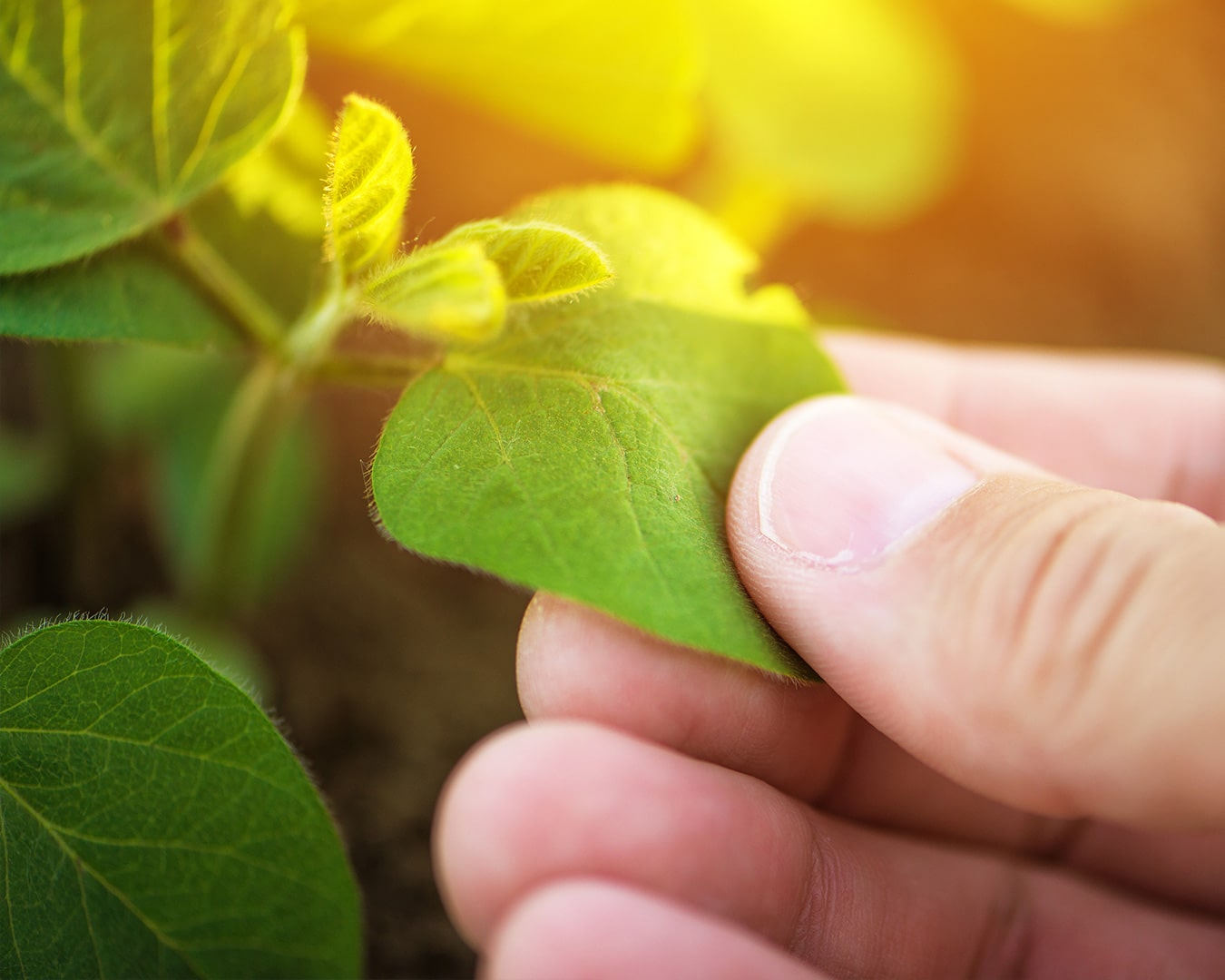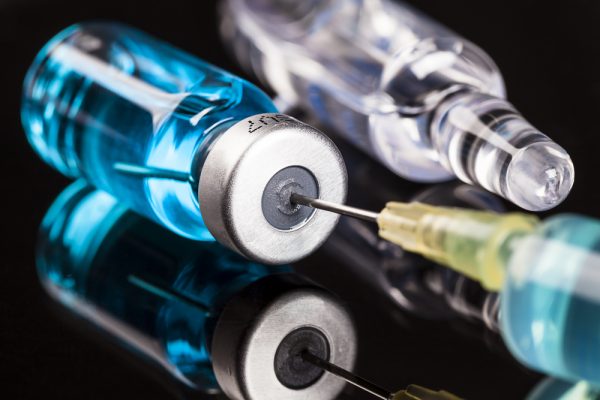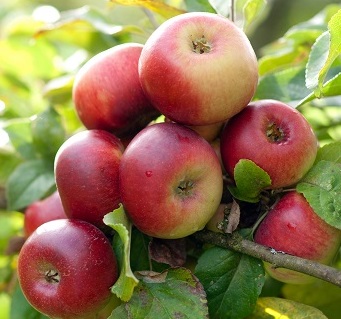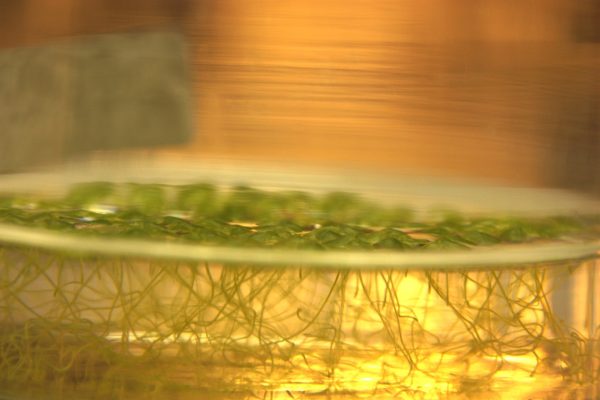Residues analysis
Test on residues in or on treated products, food and feed
The matrices intended for human consumption or raw agricultural commodities, may show the evidence that substances like Plant Protection Products were used to treat the crops or to preserve the products during the storage, this sign is defined as being a Residue.
Animal products may contain residues due to the treated crops used for animal feeding. Moreover, animal tissues entering the human food chain can retain residues of Veterinary Drugs.

Our company has a long track record for the performance of residue field studies and the laboratory experts conduct routinely the set-up/optimization, the validation of mono and multi-residue analytical methods with most advanced analytical equipment:
LC MS/MS, UPLC MS/MS, LC DAD UV-VIS/Fluorescence, ICP MS, GC MS, GC MS/MS, GC FID/µECD
Discover our test range
OECD TG 509 Crop Field Trials (CTF)
CTF are conducted to quantify the expected range of residues in or on raw agricultural commodities (RACs), including feed items following the treatment according to the proposed or set Good Agricultural Pratice. They should be designed to reflect pesticide use patterns that lead to the highest possible residues, to determine (where relevant) the rate of residues decline on commodities of interest and to define residue values for conducting dietary risk assessment and to set Maximum Residue Levels.
OECD TG 508 Magnitude of the Pesticide Residues in Processed Commodities
These studies are carried out to determine the transfer of residues from a RAC to its different processed commodities resulting from the transformation undergone: juice, purée, jam, canned fruits and berries, young and bottled wine, raisins, refined and raw oil, waste water, polished rice flour, bran and bread and many others.
OECD TG 504 Residues in Rotational Crops (Limited Field Studies)
Limited Field Studies aimed to determine the amount of pesticide residues which may be accumulated into rotational crops via soil uptake following realistic agricultural practice.
Residues in environmental samples
Based on the results from toxicological and ecotoxicological tests, residue definition for monitoring purposes
should cover the components which are part of the residue definition for the evaluation of risks considered to be relevant during the assessment of such results. Should be submitted post-registration monitoring data on fate and behaviour of the active substance, its metabolites, reaction and degradation products in:
Soil, Surface water, Ground water, Drinking water, Sediments and Air and/or in Animal tissues
Determination of the exposure concentrations of the organisms in the ecotoxicological tests
The increasing requirements of the testing guidelines to verify the concentrations at which no target organisms are exposed during the tests, as example the feeding solution in honeybees studies, or the “old” requirements as the analyses of exposure concentrations in the media during the aquatic tests has led the staff to specialize in these kind of matrices.
Residues Analytical Methods
Analytical Method Validation/ILV for determination of residues
Validation of the analytical method, or ILV of a primary method supplied by another Facility and already validated, to determine residues in plants, plant products, foodstuffs (of plant and animal origin), feedingstuffs and environmental samples.

STUDY DESIGN
Preliminary custom set-up
Just for the Analytical method validation, test design may includes an entirely new method set-up and optimisation or a checking/confirm of the analytical method supplied by the Sponsor or even a checking of the analytical method from reference literature.
Analytical method validation or ILV consist of:
Linearity (checked at each analytical sequence) with at least 5 concentrations of analytical standard in the appropriate range of concentrations diluted with untreated matrix extract.
Recovery and Precision with 2 Fortification levels on the untreated matrix: LOQ and 10xLOQ (or other suitable level) with 5 samples for each level
Acceptable ranges for the recovery and the precision depend on the matrix and the fortification level.
Interferences check 2 samples of untreated blank to check interferences, analytical artifacts and matrix effects: the analyte signal must be < 30% of LOQ.
where LOQ is defined as the low fortification level at which mean recovery and precision are acceptable.
LOD defined by Signal to Noise Ratio < 3.
Confirmatory analysis consists of additional MS/MS transition on:
– Linearity data (5 concentrations)
– Recovery and precision data at LOQ level (5 samples)
– Untreated blank data (1 sample)
If no additional transition is identified a confirmatory method is performed.
Additonally, the stability check of stock/working solutions and the stability check of the final extracts per matrix type can be carried out.
Study includes GLP managment and reporting.
REFERENCES AND GUIDELINES
SANCO/3029/99 rev. 4 (11/07/2000) – Residues: guidance for generating and reporting methods of analysis in support of pre-registration data requirements for Annex II (Part A, section 4) and Annex III (Part A, section 5) of Directive 91/414.
SANCO/825/00 rev. 8.1 (16/11/2010) – Guidance document on pesticide residue analytical methods.
Residues in plants, plant products, foodstuffs, feedingstuffs and environmental samples
The application of Plant Protection Product (PPP) according to the GAP, follows residues determination in different matrices also for PPPs based on microorganisms, visit our Microbiology Area for more information.

STUDY DESIGN
Analytical method validation includes:
Linearity (checked at each analytical sequence) with at least 5 concentrations of analytical standard in the appropriate range of concentrations diluted with untreated matrix extract.
Procedural Recovery and Precision with 2 Fortification levels on the untreated matrix: LOQ and 10xLOQ with 2 samples for each level.
Acceptable ranges for the recovery and the precision depend on the matrix.
Interferences check
Untreated blanks are carried out to check interferences, analytical artifacts and matrix effects: the analyte signal must be < 30% of LOQ where LOQ is defined as the low fortification level at which mean recovery and precision are acceptable.
LOD defined by Signal to Noise Ratio < 3.
For samples analyses, each sample (treated and untreated blank) from field trials are extracted and purified once.
The analytical method used can be validated separately in another study or whithin the this study.
Additonally, the stability check of stock/working solutions and the stability check of the final extracts per matrix type can be carried out.
If necessary, it can be carried out a storage stability check according to OECD TG 506 which includes:
Recovery in the stored samples with a fortification at 10xLOQ (2 samples) and 1 untreated blank (1 sample) with samples stored at ≤ -18°C until analysis.
Procedural recoveries with a fortification of the samples at 10xLOQ (2 samples) freshly prepared on analysis.
Time points of analysis include time zero (T0) and all other time points relevant to storage period.
Study includes GLP managment and reporting.
REFERENCES AND GUIDELINES
SANCO/3029/99 rev. 4 (11/07/2000) – Residues: guidance for generating and reporting methods of analysis in support of pre-registration data requirements for Annex II (Part A, section 4) and Annex III (Part A, section 5) of Directive 91/414.
SANCO/825/00 rev. 8.1 (16/11/2010) – Guidance document on pesticide residue analytical methods.
OECD Guideline for Testing of Chemicals, No. 506 (16th October 2007) – Stability of Pesticide Residues in Stored Commodities.
Analytical Method Validation for residues determination in matrices from ecotoxicological tests
BioTecnologie BT carries out this method validation also for Plant Protection Products based on microorganims, for more information visit our Microbiology Area.
STUDY DESIGN
Method set-up and optimisation are carried out by the suitable analytical equipment.

The analytical method validation consist of:
Linearity with 5 concentrations of analytical standard in the appropriate range of concentrations diluted with untreated matrix extract.
Recovery and Precision with 2 Fortification levels on the untreated matrix: LOQ and 10xLOQ (or other suitable level) with 5 samples for each level.
Acceptable ranges for the linearity, recovery and precision depend on the matrix and the fortification level.
Interferences check 2 samples of untreated blank to check interferences, analytical artifacts and matrix effects: the analyte signal must be < 30% of LOQ where LOQ is defined as the low fortification level at which mean recovery and precision are acceptable.
LOD defined by Signal to Noise Ratio < 3.
Confirmatory analysis consists of additional MS/MS transition on:
– Linearity data (5 concentrations)
– Recovery and precision data at LOQ level (5 samples)
– Untreated blank data (2 samples)
If no additional transition is identified a confirmatory method is performed.
Additonally, the stability check of stock/working solutions and the stability check of the final extracts per matrix type can be carried out.
Study includes GLP managment and reporting.
REFERENCES AND GUIDELINES
SANCO/3029/99 rev. 4 (11/07/2000) – Residues: guidance for generating and reporting methods of analysis in support of pre-registration data requirements for Annex II (Part A, section 4) and Annex III (Part A, section 5) of Directive 91/414.
SANCO/825/00 rev. 8.1 (16/11/2010) – Guidance document on pesticide residue analytical methods.
Study finder
Scientific Contact
Stefano Paronuzzi
E-mail: sparonuzzi@biotecnologiebt.it
Phone: +39 0371 4662700
Business Contact
Katy Lazzari
E-mail: klazzari@biotecnologiebt.it
Phone: +39 075 895 0045 – Ext. 246
Discover the other Expertise
Didn’t find what you are looking for? Send us a message!
Fill in the form with the required information (*).
Our team will be happy to provide all the necessary support with regard to your request.


 English
English Italian
Italian